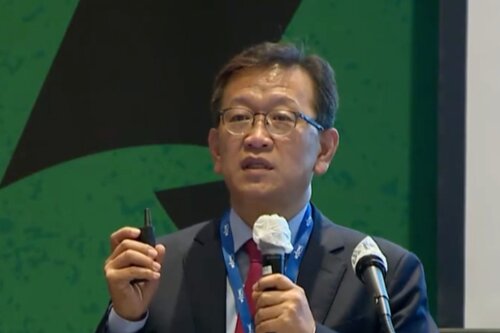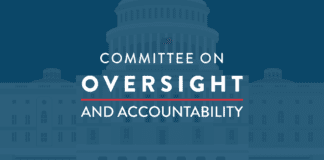(Results of the April 15 General Elections, and Outline of Problems)
In the last general elections held on April 15, of the 300 seats in the National Assembly of South Korea, 253 seats are voted in from 253 voting districts throughout the country (meaning, 1 candidate from each district is picked through the election), and the results of the votes were that the Democrat Party, which became the ruling party, got 163 seats, and the minority party (the United Future Party, or the UFP) received 84 seats.
The entirety of votes that the Democrat Party candidates received in the 253 voting districts, and the entirety of votes that the UFP candidates received only has a total difference of 8.4%, but the number of seats won by the Democrat party is almost double.
Especially in Seoul, and in other capital region areas where the set number of seats are many, the Democrat Party candidates won by not that big of a margin, and from a statistical point of view, a unique reality happened, as was described by the previous speaker.
If there was no problem with the voting process, it means that the Democratic Party played an effective game at a very sophisticated rate to climb the Guinness Book of World Records in the election system. However, in the case of the April 15 general election, there were too many problems in terms of election management, and in terms of the operation of the election-related system.
Some of those issues have already been addressed many times in national elections, such as past parliamentary and presidential elections, and even in court trials, and some have been first or newly highlighted in this most recent April 15 general elections.
For example, the ballot sorter (externally also called electronic ballot counting machine ) first introduced by the National Election Commission (NEC) in the 2012 presidential election has been controversial not only because of operational errors, but also because of the possibility of digital manipulation, and as the early-voting system was introduced in 2014, the QR code used in the early-voting ballot paper is not in line with current law regulations and may be used illegally, and thus this issue has reached its peak during this most recent elections in April.
(South Korea’s electoral litigation system)
There are two main procedures in which the effect of the election in the South Korean parliamentary or presidential election system is a problem and the results can be changed. One is that the candidate is convicted by the prosecution for violating the election law, and if the penalty of more than 1 million won is confirmed, the election will be nullified. Another is for candidates, political parties, and voters who have lost the election to file an election lawsuit in the court and go through a trial, and in doing so question the effectiveness of the election.
In this way, the election lawsuit is divided into two categories: an election invalidity suit and an elected win invalidity suit. The former is a lawsuit that takes the position that the election law and other regulations are violated in the election process and the election itself can not be recognized; the latter is a lawsuit that the election itself is not invalid but that the candidate who won cannot be recognized. If the election invalidity suit is carried forth, then a re-election (election do-over) is held, and in the case of the elected win invalidity suit, there is no election do-over but the next runner-up wins the seat.
Both lawsuits must be filed with the Supreme Court, the highest court within one month after the election, and the Supreme Court is supposed to go to trial within 180 days from the filing date, and cannot object to the Supreme Court’s trial decision. It is intended to quickly and definitively judge any controversy surrounding the election results.
Before the April 15 general elections this year, there were 0 to 2 election lawsuits every time the National Assembly elections were held, and almost all of them were invalidation of election return lawsuits. It was a lawsuit filed by the runner-up loser in the voting district where the margin of victory and defeat was very minute, in order to confirm the vote counting fraud or the vote counting error through the recount, so the recount that was called for in the suit that would entail the plaintiff paying the labor cost and other expenses, was the key procedure of the trial.
In the past 30 years, there has been only one case, in the 14th general elections held in 1992 whereby the elected candidate and the defeated candidate’s fortunes were reversed in a invalidation of election return lawsuit whereby a rcount of the votes confirmed errors in the vote counting process.
(The Present Status of Election Litigation in the April 15 General Election and Reasons for Calls for a Recount)
However, in the April 15 general elections held this year, there have been 137 election invalidation lawsuits, which is half of the number of voting districts in the entire country (253), and 2 invalidation of election return lawsuit were filed, which, when compared to the past, is an avalanche of election related lawsuits that have been filed in one election.
Even though there is still a strong negative sentiment in South Korea regarding a defeated candidate questioning the effectiveness of an election after the fact, with this most recent April 15 elections, there are too many serious defects in the election management by the NEC officials that have illegal and unconstitutional elements. The ‘defect’ here is mainly focused on early voting.
26 out of the 137 election invalidation lawsuits are waiting on the Supreme Court’s recount process, and the preservation of ballots and ballot boxes etc., but this time, it is not aimed at simply checking the miscount as in past cases. The main purpose is to find traces of manipulation of the results of the ballot counting using digital methods such as forgery of ballots, and manipulation of the ballot sorting program.
(The Illegal and Unconstitutional Elements of Early Voting in the April 15 General Elections)
For this general election that happened on April 15, a total of 29.12 million voters went to the polls in 253 voting districts throughout the country (66.2% vote participation); from this around 40% participated in the early voting period that occurred 4 to 5 days before on April 10 and 11, during two days of early voting. The early voting system was set up so that people who could not vote on election day (in this case, on April 15), could still vote.
However, there was a psychological desire to avoid congestion at the polling place with the COCID-19 pandemic, and so a record-breaking early voting ratio (26.6%) was reached with the voters’ sentiment that they will enjoy the April 15 election day designated as a temporary holiday, as well as encouragement from the President to participate in early voting, from the leader of the ruling party.
However, the results of the April 15 general election in which about 40% of all voters participated in each district for early voting, and 60% of the candidates voted for the same candidate after 4-5 days on election day, showed very different patterns and the Democrat Party candidates were elected with a lot of votes in the early voting period.
Therefore, it is extremely natural to think about the possibility that there would be enough digital manipulation to transform election statistics in the process of early voting and counting of votes, and the probability has already been variously confirmed and partially proved by various data or circumstantial evidence revealed after the election.
In addition to such individual and fragmentary circumstances, the ruling party has illegally used big data that corresponds to the personal information of voters before the general election. About 40% of voters voted in advance based on information for a period of 4-5 days shorter than other voters during the election period of only two weeks, which is also a violation of the constitutional spirit because the government and the election management authorities undermine the equivalence of voting rights.
In addition, the QR code, which was illegally used in the early voting ballot paper, is absolutely denied by the election authorities, but there is a high possibility that there is a hidden number of personal information such as the resident registration number that allows one to know who voted on the ballot, that is contained in the 31-number code that have been disclosed. If these unconstitutional elements are confirmed, the Supreme Court should declare the general elections results as invalid.
(The Tasks and Prospects of the Current Election Litigations)
The Public Official Election Act of South Korea (Article 224) stipulates that even if there is a violation of election-related regulations, the violation is “only when it is recognized that it has influenced the election results”. So it is important for the Supreme Court justices to recognize violations of election regulations in order to declare the election invalidation, but the key is to recognize that the violation of the regulations has “impacted the election results.”
However, in the past, the Supreme Court has tended to recount the existing ballots and if there is no difference in the ballot count, they have shown a tendency to not accept invalidation of election results. There is a high probability that the same will happen this time around, if things progress.
However, if the attempt to manipulate the result of systematic and intentional voting is confirmed by digital manipulation, regardless of the number of votes, even if only one vote is known to have been gained fraudulently for the election of a specific candidate, the Supreme Court must take the position that it is urgent to have an active and forward-looking attitude to declare the election invalid, by judging that the fairness of the electoral system, which is a constitutional value, has been broken and influenced the election results.
In particular, the suspicion of illegal election in the April 15 general elections is suspected of being a very sophisticated digital ballot counting equipment manipulation, and the manipulation of ballot papers themselves to disguise the digital manipulation, so recounting should be made after confirming whether there is a change in the ballot in the recount process.
The Supreme Court’s recount process is now somewhat delayed compared to past cases, but it is too early to determine why. However, if the recount is not made until September, it may be doubtful whether it is avoiding recounts to prevent political considerations and to stop the exposure of the illegal activities.
If you recount only 3-4 electoral districts, you can confirm the important part of the algorithm of illegal elections using digital information and statistical manipulation in the April 15 general elections, and the overall outline of illegal election is expected to be fully revealed.
(End)
1) In the past 30 years, elections for the National Assembly has been mainly called for recounting due to negative votes or miscounting, but the presidential election has been largely dismissed because of negative public opinion or huge recount costs, rather than invalid election, poor election management, or violation of legal regulations. The only case where the recount was carried out was for the 16th presidential election in 2002, when the Grand National Party candidate Lee Hoi-chang and Democratic Party candidate Roh Moo-hyun ran against each other. At that time, the 244 polling stations nationwide recounted about 10 million ballots of 80 polling stations designated by the GNP, and the GNP, which was then the plaintiff, was reported to have paid about 500 million won for the lawsuit, including the cost of recounting.
2) Candidate Lim Chae-jung won 32 votes, and two batches of 100 votes were found to be missing, and 172 votes were won back.
3) Article 224 of the Public Official Election Act of Korea states that “the election invalidation is only ruled when it is deemed that it has affected the election results even if there is a violation of the election regulations.”
4) While it is unlikely that the court will accept the claim if a defeated candidate raises an election invalidation lawsuit, it is common to worry that the image of disobeying the election results, in addition to the defeat in the election itself of the candidate, that the position and the image of the loser or his party will be subject to a huge negative impact on political activities and for future elections.



